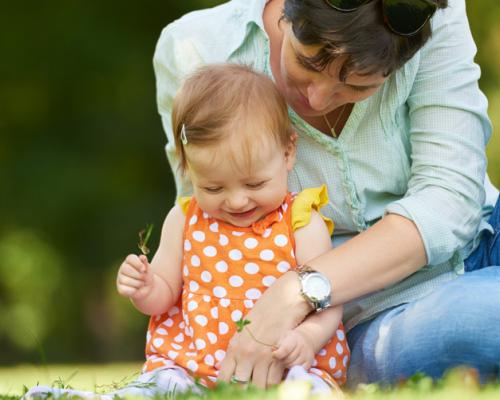Extending emotional wellbeing in schools
Stuart Coulden describes an innovative project for enhancing emotional health in diverse school communities.
I’VE got anger-management issues, so I can’t help it,” says Jake defiantly, after recounting how he had come to throw a chair at his maths teacher’s desk.
“There’s no such thing as anger-management issues,” I tell him, calmly. Jake thumps his knee.
“Yes, there is, too! My social worker said I had it. And my outreach worker! And …” He reels off, with apparent pride, the various professionals allotted to his ‘case’.
I shake my head and repeat quietly, “There’s no such thing as anger-management issues.” Seven pairs of eyes swivel warily in my direction. I’ve got their attention.
I was sitting with seven 14–15-year-olds, who had been pulled out of class for repeated aggressive behaviour (I refused to call it an anger-management group – I’m trying to get the term banned, as it is just an excuse for bad behaviour). Our chat was taking place as part of an innovative programme of work I’ve been engaged in over the past two years. The programme provides support, advice and practical help for improving emotional health and wellbeing in schools, nurseries and children’s centres; it covers nine nurseries and/or primary schools, two secondary schools and two special schools within the South Stevenage Consortium and was the idea of the extended schools coordinator Shelagh Mackey.
The extended schools programme was a government initiative which funded schools to offer additional services outside of school hours, for the benefit of children, parents and the local community. Shelagh had already made creative use of the extra funding, for instance by setting up a Saturday activity club called Dads and Kids United, to attract fathers who had only Saturday access to their children and might tend otherwise to spend it in McDonald’s. She had also bought in excellent projects with specific focuses, such as family work or debt advice, but most tended to come as ready-made packages and were geared either towards children or parents but not usually to both.
Shelagh had perceived a gap in terms of supporting emotional wellbeing and felt the need for a service that could work in a more flexible way. The schools in the consortium covered very different socio-economic areas, including one that is in one of the top five most deprived wards in the country, and so needs varied considerably. Whereas children in one area might receive good or adequate support outside of school, others lacked helpful role models and brought extremely challenging behaviours into school. So we agreed that it would be a good idea to sound out the individual schools themselves and see what extra assistance they thought might help them most.
For three months, I spent half a day going around to all the schools in the consortium, giving a presentation to head teachers on the human givens approach. This focused on needs and resources and the link between emotional intelligence and academic success – illustrating how emotional distress makes us, literally, stupid. The statement that emotional distress does not stay contained within a particular individual – it affects all who come into contact with that person – resonated very strongly with almost all the head teachers, as staff health and burnout is increasingly an issue. I explained the kinds of interventions that I could offer – for instance, identifying young people on the cusp of crisis who needed targeted help and supplying it quickly; developing tailor-made, classroom-based programmes for raising emotional intelligence and fostering good emotional health; identifying and working with those students at the top end of primary schools who would find their move on to secondary school challenging; working with parents; working with individual staff members to support schools’ existing staff health programmes; and, very importantly, teaching staff skills to enable them to reduce emotional arousal levels in their classrooms.
Not every school opted to take up the services. One school chose to engage me just for individual therapy with certain children. But most schools were keen to take advantage of a range of options, including surgeries for staff (a morning a month when staff could book a slot to discuss personal concerns or their concerns about particular children) and the crisis prevention service, which might involve working with staff, children and parents. Rapport building was key to it all: giving schools the chance to discuss and choose what help they needed, instead of imposing solutions, helped win their confidence very quickly. With just two days a week allocated to be shared out between the schools, there was no time to waste, if I wanted to make a difference. (Gradually, as time went on and schools saw how effective the methods were, more initiatives were added as more needs were identified.)

Head teachers were particularly enthused by the idea of staff learning specific skills that would help them better manage pupils’ emotional health and behaviour. They were interested in the research findings showing that one in 10 children between the ages of one and 15 has a mental health disorder.1 Estimates vary, but research suggests that 20 per cent of children have a mental health problem in any given year, and about 10 per cent at any one time.2 Rates of mental health problems among children increase as they reach adolescence: disorders affect 10.4 per cent of boys and 5.9 per cent of girls aged 5 to 10, rising to 12.8 per cent of boys and 9.65 per cent of girls aged 11 to 15.3
Schools can’t say no
As Shelagh Mackey pointed out, when she came up with the idea for the emotional wellbeing programme, child and adolescent mental health services (CAMHS), to which schools usually refer children with severe emotional problems, can say their books are full but schools can’t. Schools have to keep the troubled child, while on the long waiting list for help from CAMHS, and try somehow to carry on coping, so the skills to help them do so would be of inestimable value. Also, referrals to CAMHS have to be made by a medical person, not someone on the teaching staff, which turns emotional and behavioural problems into medical problems. Medicalising difficulties with names such as attention-deficit hyperactivity disorder and oppositional defiant disorder, in order to get help, not only makes children feel unhappy and helpless, stigmatised or else ‘special’ for the wrong reasons but also deskills parents and teachers too.
So that was why Jake, six other fiery teenagers and I ended up spending six sessions together, reframing ‘anger-management issues’. “I couldn’t help it,” said Jake, about his chair-throwing episode. “I just did it.”
“If you have this completely out-of-control emotion, how come you just threw the chair at the teacher’s desk but you didn’t hit him over the head with it?” I asked.
He looked at me as if I was stupid. “Because I’d have got thrown out of school!”
“Oh. So you did have some control.”
There was silence. Jake was clearly considering that and his chest puffed up a little. He wasn’t usually praised for anything, so being acknowledged for not causing actual bodily harm was a start. I started to talk about how brains work and about choices and consequences. I told them also how, sometimes, it was something traumatic from the past that unconsciously got pattern matched to in the present, and that did lead to an anger explosion that often couldn’t be controlled. I didn’t give them ‘anger-management techniques’ – they had heard all that stuff before. But I did say, “If we can have a grown-up discussion about all this, I’ll teach you how to hypnotise yourselves.” They loved that idea – so, before the end of the session, we had carried out some guided imagery and put in some positive expectations about ways to handle emotions. After the session, two lads hung back and, one after another, told me that uncontrollable ‘anger explosions’ were what happened to them. I arranged to see them separately to carry out the rewind detraumatisation technique and get them to rehearse, in guided imagery, calming themselves down and making positive choices.

After two sessions, the six boys and one girl were already thinking differently. They learned to scale what they were experiencing bodily, from a zero (totally chilled) to 10 (totally out of control) and to recognise danger signals along the way, such as stomach churning or shaking or feeling a desperate need to do something physical to let off steam. We were able to look at what led up to their behaviours and consider different ways of responding. “Why did you storm out of the classroom?” “The teacher looked at me funny.” “What makes you so sure he was looking at you funny? What else might his expression have meant, do you think?” Or, if there was no shifting from the funny look, they started to see that they could take evasive action further down the scale, when they recognised that their emotions were escalating. They learned to apply the 7/11 breathing technique, which served not just as a means of calming themselves down but as a distraction technique – as did ideas they came up with for themselves, such as turning their attention to recalling the last five people they had spoken to that day or the last five meals they had eaten. The idea was to encourage them to be curious about ways in which they could take control of their emotions, particularly as they had learned, till now, that they had no control.
Anger can be seductive
When young people are receptive to the idea that their anger is causing them difficulties, it is usually possible to work with them successfully. But anger can be a seductive emotion. Some youngsters (and adults) want to hold onto it because it seems to provide them with their only chance to be listened to or to get others to do their bidding. There is usually more motivation to learn how to deal with anxiety or guilt feelings, because these are unpleasant, whereas anger can feel good, if someone hasn’t learned other ways of giving and getting attention and doesn’t want to. In such cases, I suggest to staff that they should cease to excuse the bad behaviour on the grounds of ‘anger-management issues’ that can’t be helped and put in place the school sanctions that would be applied for any other serious misdemeanour.
By the end of our six sessions, my group were also starting to learn that “it isn’t fair!” is a fact of life and that there are social rules for different situations. The complaint that “Teachers always think they can tell us what to do” led to a discussion about how it is teachers who have the knowledge that the students are there to learn and teachers who, therefore, have earned the right to tell students what they want them to do – just as, in the workplace, the person who is paying the wages has the right to make most of the rules.
Putting it in context
Learning to contextualise behaviour was the focus of another six-session group, the idea for which arose after several 12- and 13-year-olds in one of the consortium’s schools had been withdrawn from classes for continual shouting and swearing. (This was a good example of tailoring an intervention to a specific need.) These particular young people had no idea that behaviour that was acceptable among themselves and their ‘mates’ was not appropriate in other settings, such as classrooms or shops – or magistrates’ courts. I thought about how I could convey this without sounding preachy and hit on the idea of showing them a selection of stand-up comedy acts, ranging from family-friendly Michael McIntyre to contentiously edgy Frankie Boyle. Their task, when watching the video clips, was to decide whom they would feel comfortable watching them with? Then they each devised a stand-up routine (plundering heavily from YouTube) that they thought could be done with the head teacher present; one with their parents present and one for their mates. They all took to the task with gusto, thoroughly enjoyed themselves and, when they returned to class, behaved much more appropriately.
Other groups that arose to meet an identified need were the film group and the happiness group. At one primary school, it had become increasingly apparent that a great many 9–11-year-olds (Year 5 and 6) had extremely poor social and emotional skills. This had, to an extent, been masked when they were younger but was impossible to miss now. The deficits were such that it was unlikely that the worst affected would manage to fit into mainstream secondary schools, without causing ructions and ending up excluded. The children seemed singularly unable to look at anything from any point of view but their own and, consequently, were unable to empathise with or even relate in a basic way to others. Classes were mayhem, the least little altercation leading to fights, and teachers were tearing their hair out. So, as much to give the staff a break and other children a chance to learn as to help the worst offenders gain some much needed skills, I set up an outdoor classroom for a group of nine boys, where they could do something physical and let off steam. Searching for a focus, we came up with the idea of getting them to make a film. As the existing school building was to be knocked down and a spanking new building was already waiting for everyone to move into at the start of the next autumn term, it seemed useful and fun to make a film that would commemorate the old school and show new-comers what it had been like.
The children formed pairs – any larger grouping would have been impossible for them to cope with without constant bickering and fisticuffs and, even so, I myself had to pair up with one child, who couldn’t manage to cooperate with even a single other child. Everyone took roles, such as director, cameraman, voiceover, and, in the process, worked on some basic planning and negotiating skills. Each duo came up with a theme – with my help – and produced a written storyboard. One pair was despatched to find out some background on the school; another focused on old school photos, another on interviewing a selection of pupils about the old school and what they would miss; and another on interviewing staff. The pair that were supposed to be talking to staff suddenly started behaving extremely badly. It took me some time to discover the reason: they felt intimidated talking to adults, apart from their class teacher – and, therefore, getting thrown off the project for bad behaviour or rubbishing it seemed preferable to embarrassing themselves in front of other staff. I was able to coach them in how to approach adults and how to ask for the information they wanted and praised them fulsomely when they went through with it. (Clearly, having the time to sort this out was a luxury that would not be open to teachers working in classrooms of 30 children.) As the boys settled into the project, they all became much more engaged and proudly looked forward to their short finished film being shown in the final assembly of the school year.
Interestingly, when we had a campfire evening, with a barbecue and games, to celebrate the end of the project, the boys had a highly enjoyable time and were relaxed with each other, instead of bickering or fighting. Perhaps it was because it was an out-of-school event and they didn’t fear being shown up as stupid.
The happy class
The ‘happy class’, as the kids called it, came about when teachers at one primary school observed that their Year 6 class were particularly lacking in confidence and fearful of the national tests that they were due to take. I created a 10-week programme which was about becoming comfortable in their own skins (‘low self-esteem’, like ‘anger management issues’, is a term that I would like to see banned). We looked at topics such as needs and resources, optimism and positive thinking, goals, instant and deferred gratification, being in ‘flow’ and what happiness meant to them. The children had a happiness workbook to fill in and also completed a happiness diary each night, in which they had to record three things that had given them pleasure that day. It was interesting to see how, as the course went on, items recorded switched from the “I went to the shops with Mum and she bought me…” variety to “I pushed my little sister on the swing and it was nice to hear her laughing”. They were starting to see that it wasn’t the material things that truly made them happy.

The programme was so successful that one of the secondary schools in the consortium became interested in a version of it for their own pupils. Also, I had asked, in each case, that a teacher and teaching assistant sit in for all the sessions, so that they could learn what they needed to know to deliver the programme in future themselves. This has since been happening – and I have also been told that many children who attended the first class are still choosing to keep their happiness diaries.
Cuddly monkey
‘Circle time’, an established feature in primary schools for helping promote positive relationships and behaviour, has also been a valuable vehicle for addressing challenging issues connected with emotional health. My lead in this was my cuddly monkey toy, which became the mouthpiece for disclosures when discomfiting issues were being discussed. So I might start a session saying, “Monkey’s a bit tired today. He didn’t sleep very well because he was worried about whether he might get called names today.” Then, monkey was passed around the circle to any child who wanted to contribute a little more information about monkey’s feelings about name calling.
I once spent three or four sessions with a group of six- and seven-year-olds, who had been enormously upset and frightened by one extremely violent and aggressive child (who had had to be withdrawn from the school). The outbursts were so alarming that staff had, on occasions, been obliged to evacuate all the other children from the classroom. Through monkey, we explored what happens when we feel frightened, why it is natural to feel fear (staff shared that they had felt fearful too) and told stories designed to help the children feel safe again.
If a child is exhibiting particularly disturbing behaviour or there are problems within the family, staff know that I can be relied upon to see whoever needs to be seen within a week (whereas it would be up to six months for a referral to the educational psychologist or to CAMHS) and that gives them a strong sense of reassurance. They don’t feel so alone. On one occasion, a boy was brought into school by his grandmother, who informed his class teacher that the boy’s father had been murdered the day before but he didn’t yet know, so could she kindly tell him. On that occasion, I supported the boy but also the class teacher.
If I am asked to see a child for individual therapy, I always suggest seeing the parent or parents first, in case problems can be solved within the family, rather than obliging a very young child to open up to a stranger. For instance, explaining to one mother that giving her young son cans of caffeine-laced Red Bull and a KitKat to bring to school as his daily lunch explained why he was wired for so much of the day and, therefore, so extremely unruly.
Twice parents have sought help because they were concerned whether the sexual abuse their sons had been subjected to when very young would affect them now they were nine or 10. One family kept looking for signs of disturbance and asking the boy how he felt, which he hated and recoiled from – especially as he hardly remembered the abuse. His behaviour was starting to become challenging. I was able to assure the parents that not everyone is traumatised by bad things that happen to them and that the best thing they could do was to let him know that he could come to them (or to me) if ever he wanted to talk. I gave them strategies for helping him to talk and for helping them listen. The boy later decided that he would like to talk to me. He was not traumatised but was aware what had happened was wrong. I congratulated him for recognising that what had happened was not appropriate, because that would give him the strength and the knowledge not to let such a thing happen in the future.
On one occasion, I was asked to see a boy whose father had set himself on fire in front of the boy and his mother. Naturally, the child was traumatised but his mother had refused ever to refer to what had happened, insisting he just had to “move on”. I worked with the boy, who responded successfully to the rewind detraumatisation technique, but I also spent time with the mother, to help her better understand her son’s needs, as well as her own.
Dens with the dads
Getting children and parents together can be fruitful – for instance, there was a nursery fun day at which my role was to help build dens with the little boys and their fathers. The idea was to chat with the dads informally, while we got on with the task, and, in the process, model more appropriate ways to spend time with kids (rather than putting them in front of the television or leaving them to their computers). Unfortunately, the fathers who might most benefit are the fathers who don’t usually come – and that tends to be the ones who haven’t got jobs and who may have had particularly bad experiences of school themselves or are low in confidence. It was the same at the campfire evening to celebrate the end of the film project. I was particularly hoping lots of dads might come so that, by their presence, they would convey the message to their children that engaging with school is okay. (Often children pick up the opposite message, as it is rarely the dads who look at their school books or come to parents’ evenings.) I am still hoping to find other ways to engage them.
More successful, however, was a two-session workshop I ran for parents whose children were shortly to transfer to secondary school. It was entitled, “What is bullying and how to help your child not to become a victim”, which attracted a lot of interest. But the subtext was that not every negative event or emotion can be attributed to bullying and it is better to teach children resilience than to jump to conclusions and treat genuine accidents (such as getting hit on the head by a ball) or well-deserved reprimands by teachers as bullying. We discussed normalising events, so that children realise they aren’t the only ones that experience particular difficulties, and normalising the expressing of emotions – “anyone would feel scared/disappointed/frustrated if that happened to them”. Amongst other things, we also looked at the need to let children take ‘risks’, such as climbing trees or travelling to school unaccompanied. Twenty parents attended the workshop, including some who didn’t normally come into school. One couple were bringing up their grandson. The grandfather, who had had to be coerced by his wife to come at all, said at the end, “I thought it was going to be just some dippy psychologist talking out of his arse. Instead, it was practical common-sense stuff that was what we used to do when I was a kid!” He gave it his seal of approval.
Help for teachers
As mentioned at the start, one of the most valued aspects of the programme has been the teaching of skills to help staff handle challenging behaviour. In one school, four-year-olds were so out of control that teaching staff were often in tears. I was able to show them that, because they had the expectation of problems, they brought their own tension into the classroom, and that was being picked up on by the children, so the problems were escalating; the more stressed they became, the less able they were to think more clearly and use the problem-solving skills they all had. I showed them how to calm themselves down, discussed which children were the catalysts of the mayhem and then explored new routines that would change the nature of the day. For instance, they learned that, once the children were aroused, it was impossible to reason with them, so they needed to create calm first and then not bark ineffectual orders but give limited choices to the most high-spirited: “Would you like to sit on the mat with me, Ivor, or sit over there with Mrs Jenkins?”

Early on, staff in several schools had requested workshops in guided visualisation. In one primary school, this was enjoyed so much that I was asked to do a session with the Year 6 children to calm them down and increase their confidence before their national tests. Staff then learned to do guided imagery themselves and many now use it routinely, either to prepare children for learning or to calm them down and change pace after active lessons, such as PE. Also, in staff training sessions, we have looked at how the brain works and at techniques for working in accordance with it, to get the best out of children. As more and more children are being diagnosed as on the autistic spectrum, an understanding of the specific deficits involved and how these affect children’s day-to day-experience is extremely valuable.
Doing what works
Of course, teachers are highly skilled professionals. So it made sense to me when Jenn Phelps, head of Roebuck Primary School, said that one of the things about the staff trainings that she felt had helped most was the confidence it gave staff to follow their instincts – “it’s as if it gives them permission to do what, instinctively, they know works and, therefore, to do more of it”. The monthly morning surgeries, with the 30-minute individual slots for staff, have also been valued highly. In some cases, a session at just the right time has stopped someone from going off on long-term sick leave. Meanwhile, headteachers have appreciated the informal support from someone who is interested but not a school governor or local authority official. They feel freer to let off steam or pursue unconventional ideas with an ‘outsider’, who is not in the system.
The time I have spent working with the South Stevenage Consortium comes down to just 10 hours a week or 80 school days over the whole two-year period. Yet such a diversity of goals has been met, all set by the individual schools concerned and all leading to a transfer of skills to children, staff and parents. It has been hard to cram everything in (even though, inevitably, one donates much extra time for free), so the focus has tended to be on the older children when, to be truly effective, we need also to be targeting children when they are four, five or six. If they lack support and direction at home, they need help at the very start of their school career, so that they discover early on how to approach learning and how to socialise. Sometimes, by the age of nine or 10, when the problems are more readily apparent, it is already too late.
Unfortunately, however, the extended schools programme, in its original form, has come to an end and the funding has disappeared with it. Through Shelagh’s determination, the money has been found from other sources to enable me to continue to work with the consortium but now for only one day a week, instead of two. It is a shame. After all, the extended schools programme was all about devolving services and allowing communities a say in what they need – exactly, one would have thought, what this coalition government is championing. We can only hope that someone somewhere who holds the purse strings will see sense and channel the help back in as quickly as possible, whatever the new ‘initiative’ gets to be called.
Stuart Coulden currently works as a freelance therapist, trainer and consultant in schools in Hertfordshire, London Boroughs and the South East. He has worked as a nurse, in education and with the Connexions Service as well as being involved in developing social policy. Stuart regularly delivers training and workshops to education and social policy groups and is a member of the Human Givens Institute.
This article was first published in 2011 in Volume 18, No. 3 of the Human Givens Journal.
 We need your help – this article originally appeared in the Human Givens Journal which takes no advertising at all, in order to maintain its editorial independence.
We need your help – this article originally appeared in the Human Givens Journal which takes no advertising at all, in order to maintain its editorial independence.
To survive it needs new readers and subscribers – if you have found the articles, case histories and interviews on this website helpful, and would like to support the human givens approach – please take out a subscription or buy a back issue today.
References
- The Office for National Statistics (2005). Mental Health in Children and Young People in Great Britain.
- Mental Health Foundation (2005). Lifetime Impacts: childhood and adolescent mental health, understanding the lifetime impacts.
- National Statistics Online (2004). Mental Disorder More Common In Boys.
Latest Tweets:
Tweets by humangivensLatest News:
HG practitioner participates in global congress
HG practitioner Felicity Jaffrey, who lives and works in Egypt, received the extraordinary honour of being invited to speak at Egypt’s hugely prestigious Global Congress on Population, Health and Human Development (PHDC24) in Cairo in October.
SCoPEd - latest update
The six SCoPEd partners have published their latest update on the important work currently underway with regards to the SCoPEd framework implementation, governance and impact assessment.
Date posted: 14/02/2024















